Returning to work after a break often means reevaluating your safety gear.
Especially when it comes to footwear.
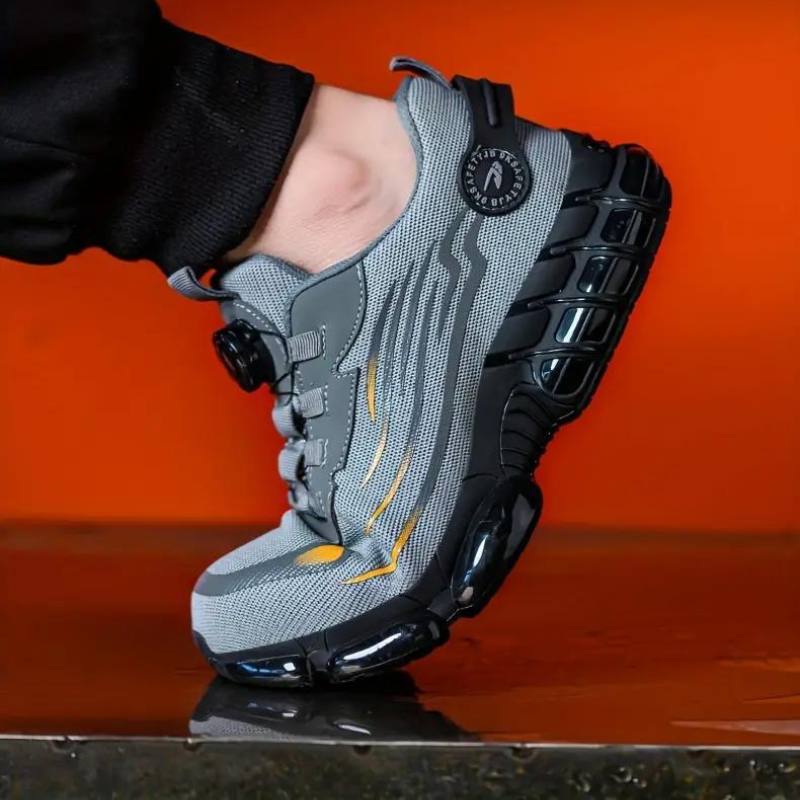
9KSAFETYJB Rotary Button Safety Work Shoes | Zeal 665GY
These aren’t just any shoes. They’re designed to protect your feet from workplace hazards.
Whether you’re in construction, manufacturing, or any industry that poses risks to your feet, safety shoes are crucial.
But how do you choose the best Safety Shoes?
This guide will help you navigate the world of safety shoes. We’ll cover everything from key features to look for, to the best brands in the market.
Whether you’re a man or a woman, whether you prefer lightweight shoes or steel toe boots, we’ve got you covered.
Let’s step into the world of safety shoes and find the perfect pair for your back-to-work needs.
Understanding the Importance of Safety Shoes in the Workplace
Safety shoes are more than just a part of your work attire. They play a crucial role in ensuring your safety at work.
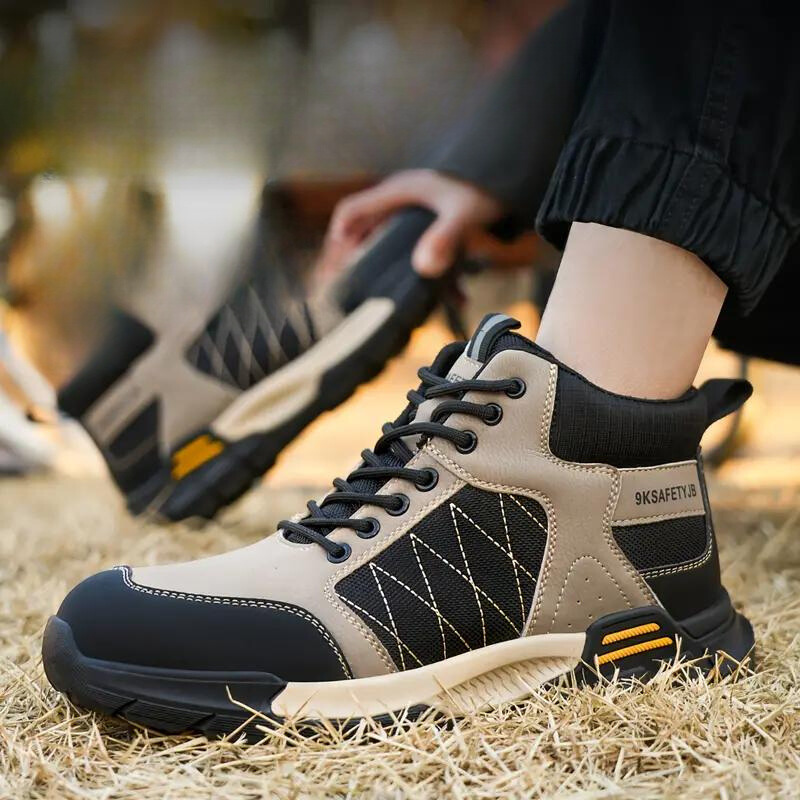
9KSAFETYJB Indestructible Men Safety Boots | Navigator 608B
In many industries, foot injuries are a common occurrence. These can range from minor cuts and sprains to severe injuries that can lead to permanent disability. Safety shoes are designed to protect your feet from such hazards.
But the importance of safety shoes goes beyond just injury prevention. They also play a significant role in ensuring compliance with workplace health and safety regulations. Many industries have strict rules about the type of footwear employees must wear. Failing to comply can lead to penalties for both the employee and the employer.
Here are some key reasons why safety shoes are essential in the workplace:
- Protection from falling objects
- Prevention of punctures and cuts
- Slip resistance
- Electrical hazard protection
- Thermal protection
In the following sections, we’ll delve deeper into these features and how to choose the right safety shoes for your specific needs. Whether you’re looking for 9ksafetyjb boots, lightweight shoes, or steel toe boots, understanding the importance of safety shoes is the first step in making an informed choice.
Key Features of Safety Shoes for Optimal Protection
When it comes to safety shoes, not all are created equal. Different styles and brands offer various features, each designed to protect against specific hazards.
One of the most critical features to look for is slip resistance. Slips and falls are among the most common workplace accidents, and a good pair of slip-resistant shoes can significantly reduce this risk.
Another essential feature is electrical hazard protection. This is particularly important for those working around electricity, as it can prevent electrical shocks.
Safety shoes also come with features like puncture-resistant soles. These are crucial for workers in industries where sharp objects are common, such as construction or manufacturing.

Here are some key features to look for when buying safety shoes:
- Slip resistance
- Electrical hazard protection
- Puncture-resistant soles
- Waterproof or water-resistant
- Insulated for cold environments
- Heat resistant for hot environments
- Metatarsal guards for protection from falling objects
- Antistatic or conductive to prevent static electricity build-up
Remember, the right safety shoes for you will depend on your specific work environment and the potential hazards you face.
Steel Toe vs. Composite Toe: What’s the Difference?
When it comes to safety shoes, one of the most common questions is the difference between steel toe and composite toe boots.
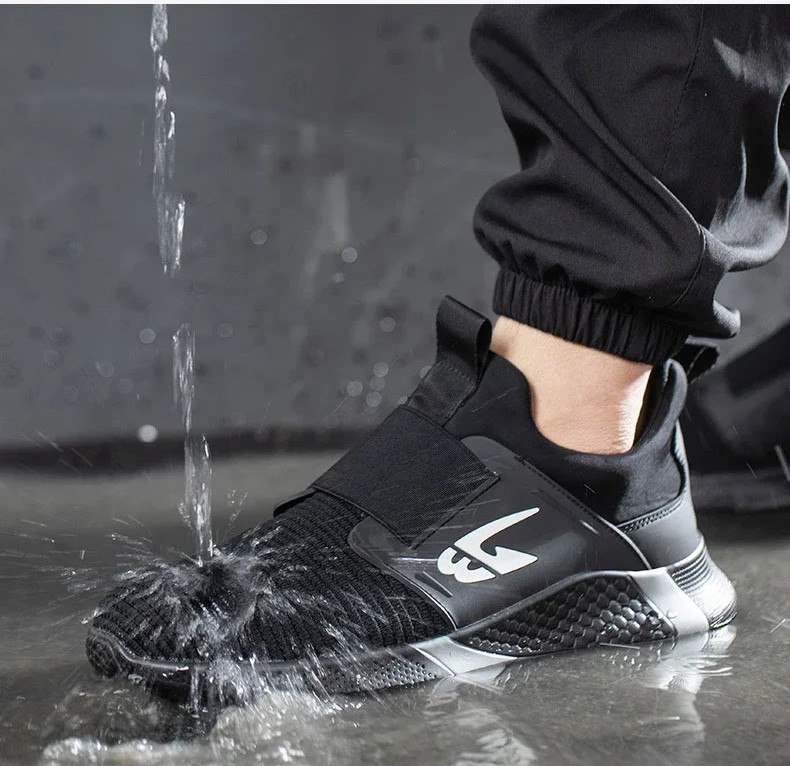
Steel toe boots, as the name suggests, have a steel cap in the toe area. This provides excellent protection against impact and compression. They are a popular choice in many heavy-duty industries.
On the other hand, composite toe boots use non-metallic materials like plastic, carbon fiber, or Kevlar. While they offer similar protection levels, they are lighter and won’t conduct heat or cold as steel does.
So, which one is better? It depends on your needs. If you need maximum protection and don’t mind the extra weight, steel toe boots are a great choice. But if you want something lighter and more comfortable for long wear, composite toe boots might be the better option.
The Advantages of Lightweight and Comfortable Safety Shoes
While safety is the primary concern, comfort is also crucial when choosing safety shoes. After all, you’ll likely be wearing these shoes for long hours each day.
Lightweight shoes can make a big difference in comfort. They reduce foot fatigue, making it easier to stay on your feet for extended periods. They also put less strain on your legs and back, reducing the risk of musculoskeletal disorders.
Comfortable safety shoes also fit well. They should have enough room for your toes to move but should not be so loose that your foot slides around. A good fit not only increases comfort but also improves protection.
In conclusion, when choosing safety shoes, don’t compromise on comfort. A comfortable pair of safety shoes can make your workday much more bearable and keep you safe at the same time.
Selecting the Right Safety Shoes for Your Industry
Choosing the right safety shoes is not a one-size-fits-all process. Different industries have different hazards, and your safety shoes should be tailored to protect against those specific risks.
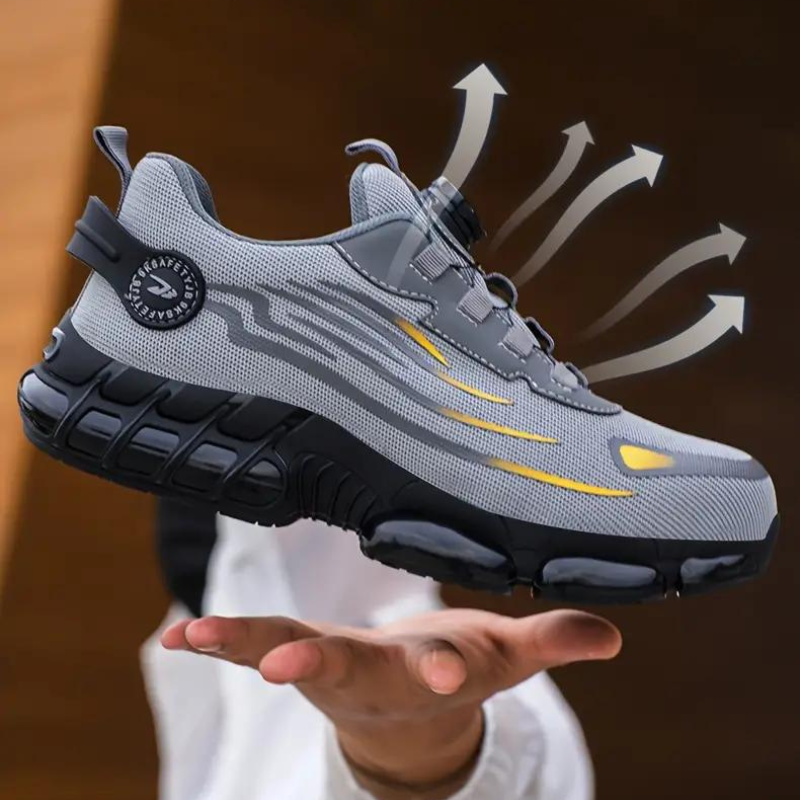
For instance, if you work in construction, you’ll need safety shoes with features like puncture-resistant soles and metatarsal guards. These protect against common hazards like sharp objects and falling debris.
On the other hand, if you work in a kitchen or food service, slip-resistant shoes are a must. These environments often have wet or greasy floors, and a good pair of slip-resistant shoes can prevent falls.
Here are some industries and the specific safety shoe features they require:
- Construction: Puncture-resistant soles, metatarsal guards
- Food service: Slip-resistant soles
- Electrical work: Electrical hazard protection
- Cold environments: Insulation
- Hot environments: Heat resistance
Remember, the key is to understand the specific risks of your workplace and choose safety shoes that offer the right protection.
Safety Shoes for Men: Tailored for Durability and Protection
When it comes to safety shoes for men, durability and protection are paramount. Men often work in heavy-duty industries, and their safety shoes need to withstand tough conditions.
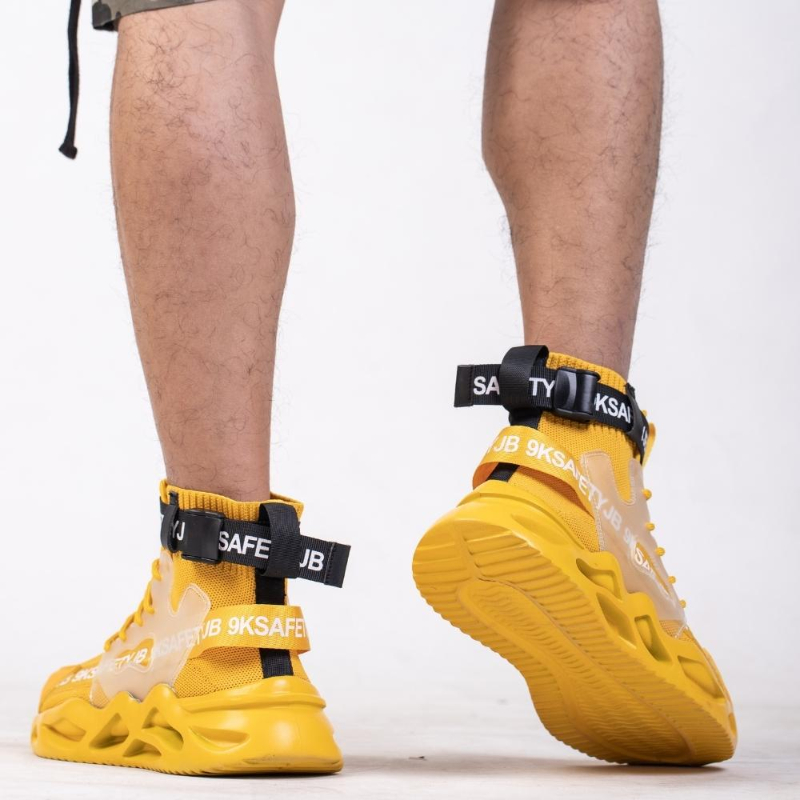
Steel toe boots are a popular choice for men. They offer excellent protection against impact and compression, making them ideal for industries like construction and manufacturing.
But it’s not just about protection. Comfort is also crucial. Look for safety shoes with features like padded collars, cushioned insoles, and breathable materials. These can make a big difference in comfort, especially during long workdays.
Safety Shoes for Women: Combining Safety with Ergonomic Design
Safety shoes for women have come a long way. Today, they are designed to offer the same level of protection as men’s safety shoes, but with a focus on fit and design that caters to women.
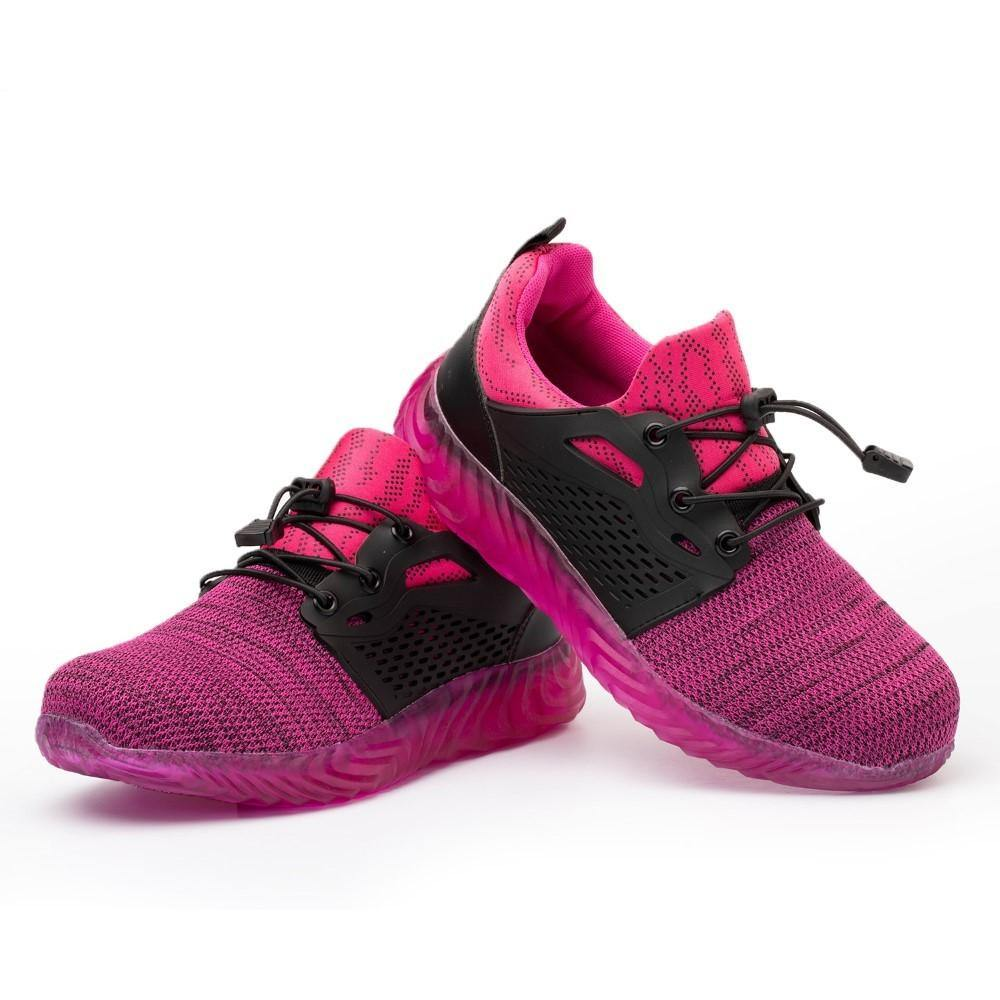
For instance, women’s safety shoes often have narrower heels and wider toe areas. This accommodates the typical shape of a woman’s foot, ensuring a better fit and more comfort.
But it’s not just about fit. Women’s safety shoes also come in a variety of styles and colors, allowing women to express their personal style while staying safe. So whether you prefer a sneaker-style safety shoe or a more traditional boot, there’s a women’s safety shoe out there for you.
The 9k Safety JB Collection: A Blend of Style and Safety
When it comes to safety shoes, the 9k Safety JB collection stands out. This range combines style and safety, offering a variety of options for both men and women.
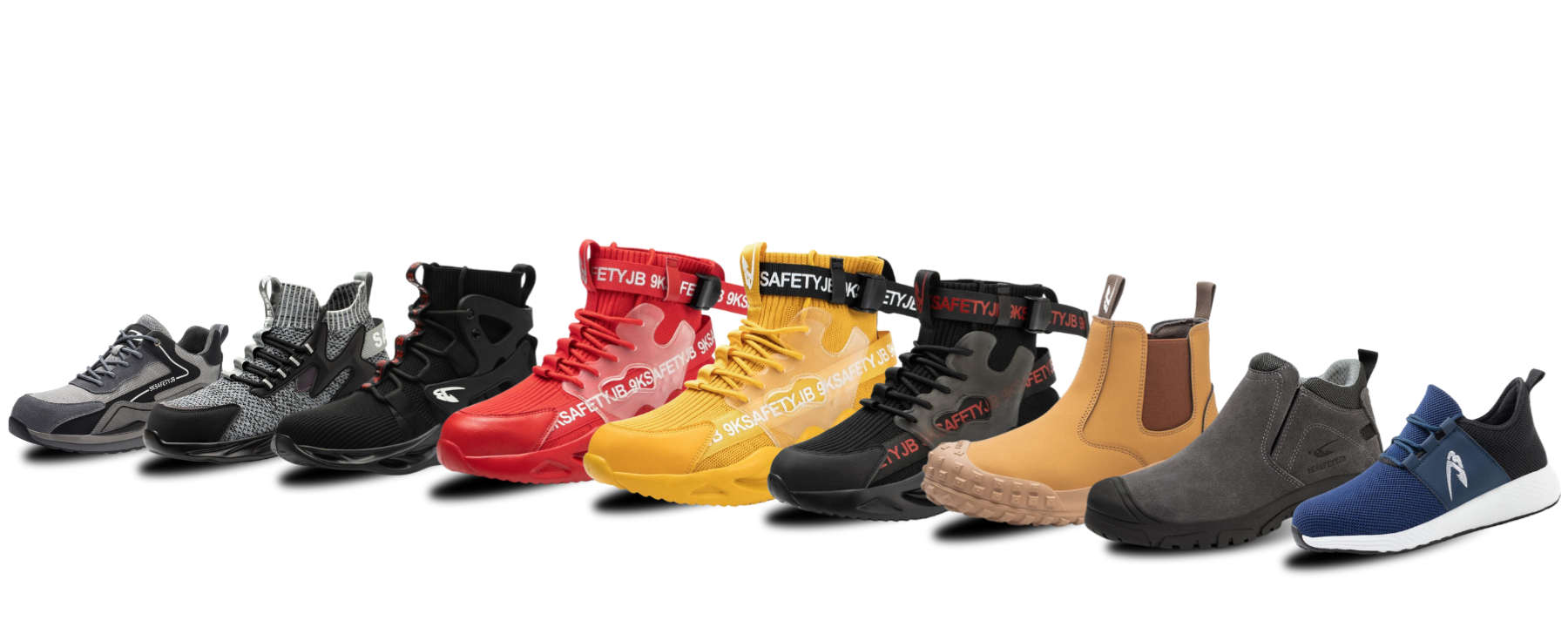
One of the key features of the 9k Safety JB collection is its focus on comfort. The shoes are designed with lightweight materials and cushioned insoles, reducing fatigue during long workdays.
But comfort doesn’t mean compromising on safety. The 9k Safety JB shoes come with features like steel toe caps, slip-resistant soles, and electrical hazard protection.
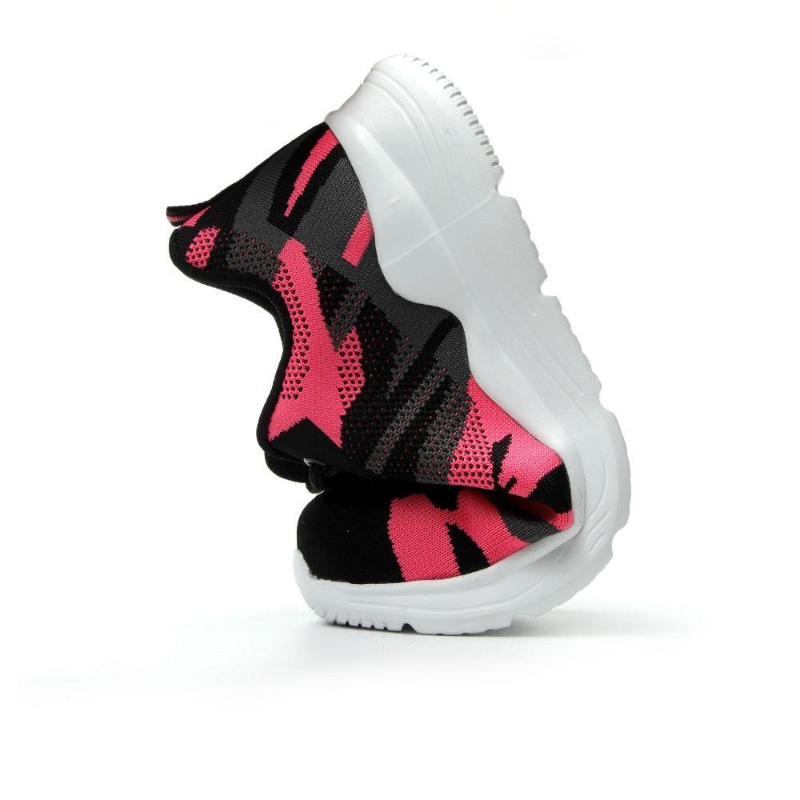
Moreover, the 9k Safety JB collection offers a range of styles. From traditional boots to modern sneakers, there’s a design to suit everyone’s taste. This makes the collection a great choice for those who want safety shoes that can be worn both at work and outside.
Exploring the Range: 9ksafetyjb Boots and Shoes
The 9k Safety JB collection includes both boots and shoes, each designed with specific features to cater to different needs.

For instance, the 9ksafetyjb boots are perfect for heavy-duty work. They come with features like:
- Steel toe caps for impact protection
- Puncture-resistant soles for protection against sharp objects
- High ankle support for stability
On the other hand, the 9ksafetyjb shoes are more versatile. They are lighter and more flexible, making them suitable for a variety of industries. They also come with safety features like slip-resistant soles and electrical hazard protection.
Whether you choose boots or shoes, the 9k Safety JB collection ensures you don’t have to compromise on safety, comfort, or style.
How to Ensure the Perfect Fit for Your Safety Shoes
Finding the perfect fit for your safety shoes is crucial. A well-fitted shoe not only ensures comfort but also maximizes protection.
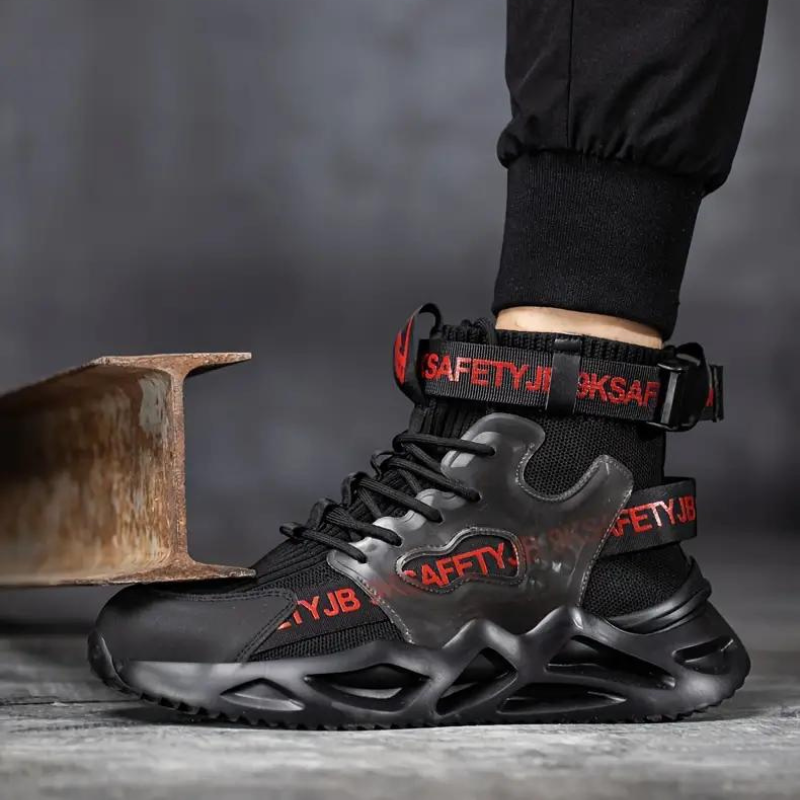
Here are some tips to help you find the perfect fit:
- Measure your foot: Use a ruler or a brannock device to measure your foot length and width. Remember to measure your foot at the end of the day when it’s at its largest.
- Try on both shoes: Always try on both shoes as one foot may be larger than the other.
- Check the toe room: There should be enough room in the toe box for your toes to move freely. A tight toe box can lead to blisters and discomfort.
- Walk around: Walk around in the shoes to check for any discomfort. The shoes should feel comfortable right away, without any need for a break-in period.
- Check the heel: The heel should fit snugly in the shoe without slipping. A loose heel can lead to instability and blisters.
Remember, a well-fitted safety shoe not only enhances comfort but also ensures optimal protection. So, take your time to find the perfect fit. It’s worth the effort.
Maintenance and Care: Extending the Life of Your Safety Shoes
Proper maintenance and care can significantly extend the life of your safety shoes. It’s not just about keeping them clean, but also ensuring they remain effective in providing protection.
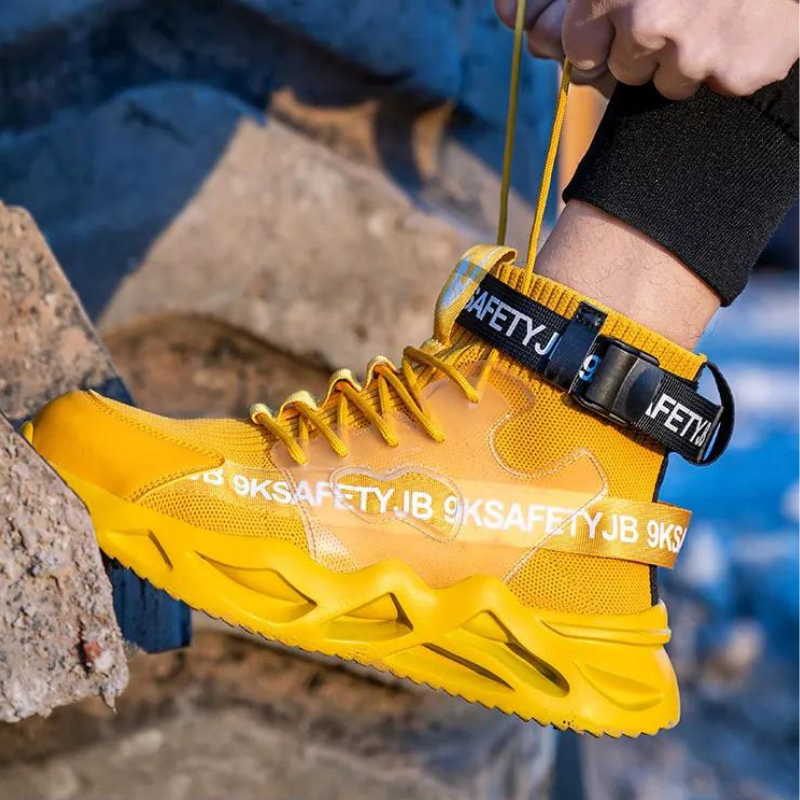
Here are some tips to help you maintain your safety shoes:
- Clean regularly: Remove dirt and dust from your shoes after each use. Use a soft brush or damp cloth for cleaning. For stubborn stains, use mild soap and water.
- Dry properly: Never dry your shoes near a heat source as it can damage the material. Instead, let them air dry at room temperature.
- Use shoe trees: Shoe trees can help maintain the shape of your shoes and also absorb moisture, preventing bacterial growth.
- Regular inspection: Regularly inspect your shoes for any signs of wear and tear. If the protective features are compromised, it’s time to replace them.
Remember, a well-maintained safety shoe not only lasts longer but also provides consistent protection. So, make it a habit to take care of your safety shoes. It’s an investment worth protecting.
The Role of Safety Shoes in Workplace Compliance and Injury Prevention
Safety shoes play a crucial role in ensuring workplace compliance with health and safety regulations. They are not just a requirement but a necessity to protect workers from potential hazards.

Here are some ways safety shoes contribute to injury prevention:
- Preventing slips and falls: Safety shoes with slip-resistant soles can prevent accidents on slippery surfaces.
- Protecting from falling objects: Steel toe boots or composite toe boots can protect your feet from falling objects at the workplace.
- Preventing punctures: Some safety shoes come with puncture-resistant soles, protecting your feet from sharp objects on the ground.
- Electrical protection: Safety shoes with electrical hazard protection can prevent electric shocks.
By wearing the right safety shoes, workers can significantly reduce the risk of foot injuries. It’s not just about compliance, but about ensuring a safe and productive work environment. Remember, safety should always be a priority.
Investing in Quality: The Long-Term Benefits of Premium Safety Shoes
Investing in high-quality safety shoes is not just about immediate comfort and protection. It’s also about long-term benefits that can significantly impact your work life.
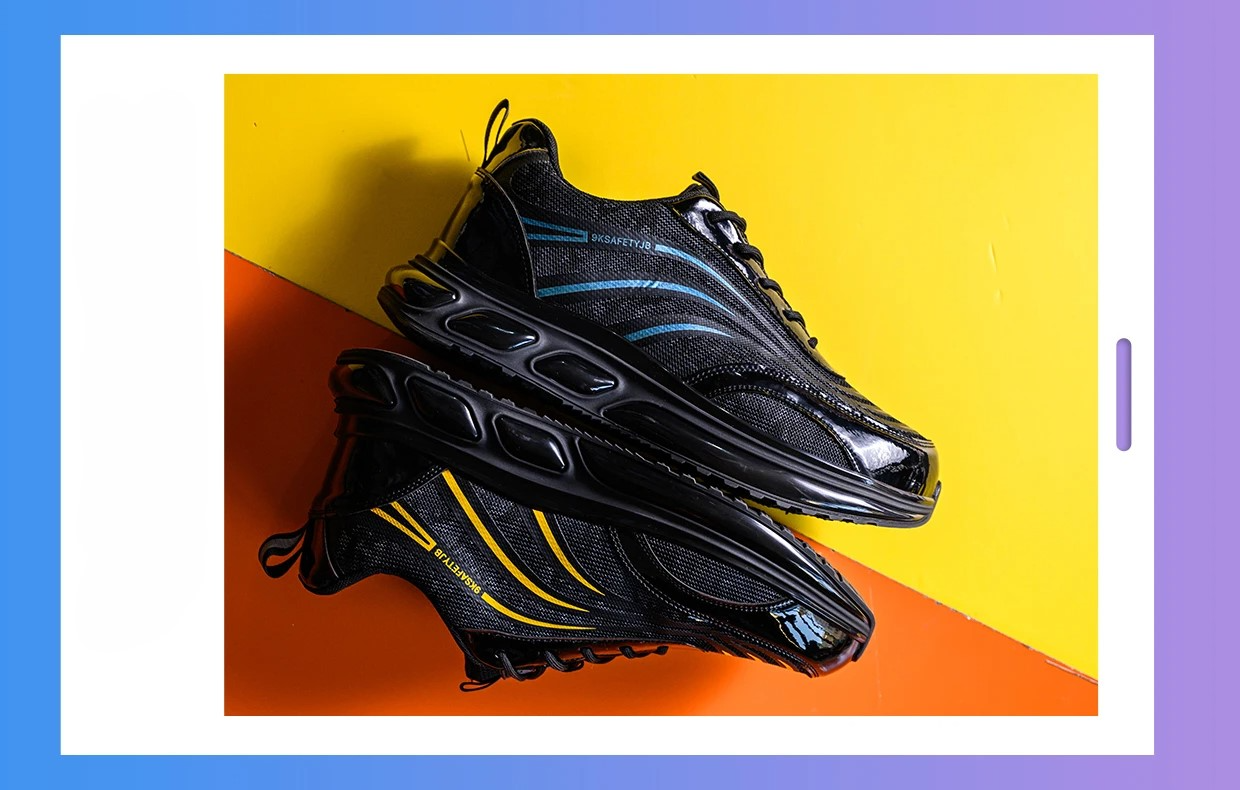
About 9ksafetyjb Safetyjb Shoes
Quality safety shoes are designed to last. They are made with durable materials that can withstand harsh working conditions. This means you won’t have to replace them as often, saving you money in the long run.
Moreover, premium safety shoes often come with advanced features. These can include anti-fatigue technology, moisture-wicking materials, and ergonomic designs. These features not only provide superior protection but also enhance comfort, reducing the risk of foot fatigue and related health issues.
In conclusion, while premium safety shoes may cost more upfront, the long-term benefits make them a worthwhile investment. They offer superior protection, comfort, and durability, contributing to a safer and more productive work environment.
Where to Buy Safety Shoes for Back to Work: Retailers and Online Options
When it comes to buying safety shoes for back to work, you have several options. Both physical retailers and online stores offer a wide range of safety footwear to choose from.
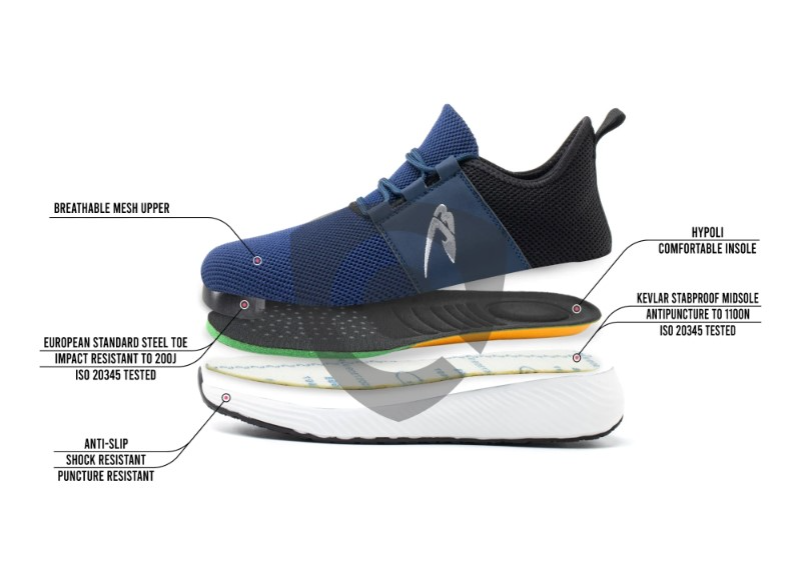
Physical retailers, such as workwear stores and some department stores, offer the advantage of being able to try on shoes before you buy them. This can be especially helpful if you are unsure of your size or the fit of a particular brand or style.
The 9ksafetyjb store offers a quality product and the ability to return or exchange if the shoes do not meet your expectations.
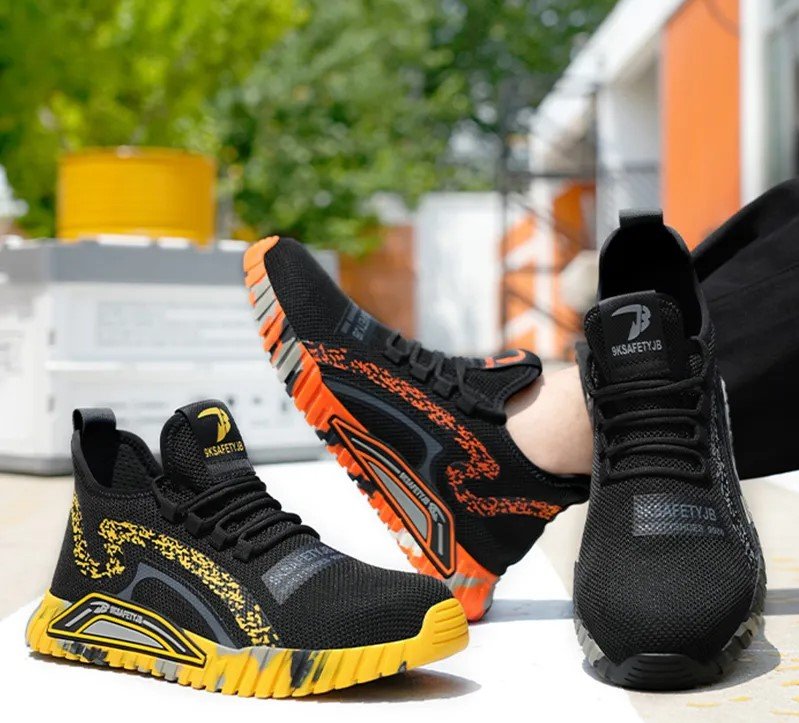

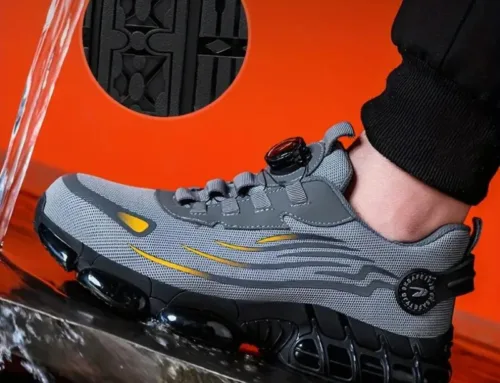
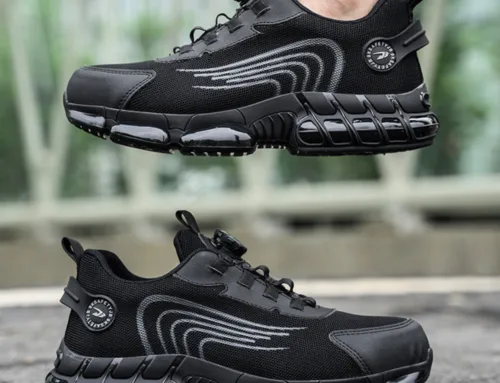
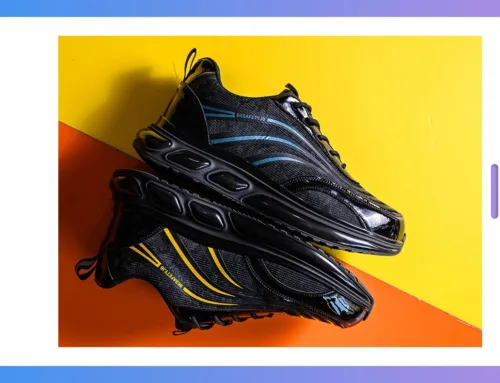
Leave A Comment